--
Desert Tortoise
Gopherus agassizii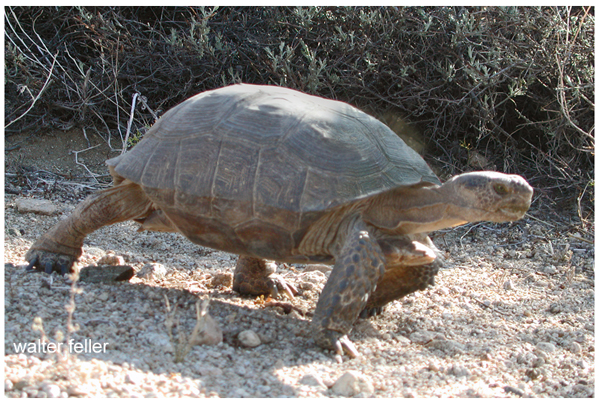
Like other reptiles, the desert tortoise is cold-blooded. To survive in the desert, the tortoise estivates (remains underground in its burrow) during the hottest times of the day in the summer and hibernates (sleeps underground in its burrow) through the winter. Tortoises come out in the spring to eat grasses and wildflowers and drink water from the spring rains (although they obtain most of their water from the plants they eat). They store water within themselves and use it through the dry months while water is not available. In the spring, they socialize and look for mates. At other times of the year they are less active above ground.
A Primitive Relic
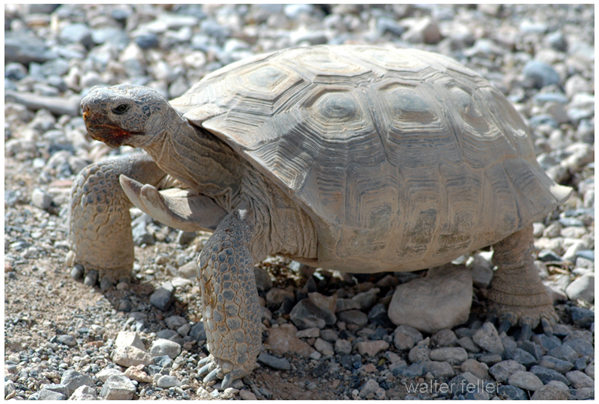
In America, the term "tortoise" refers to all turtle species that live primarily on land. According to fossil records, the desert tortoise, Gopherus agassizii, is one of four species that have remained virtually unchanged since the Oligocene Epoch (27-37 million years ago).
Geographic Range
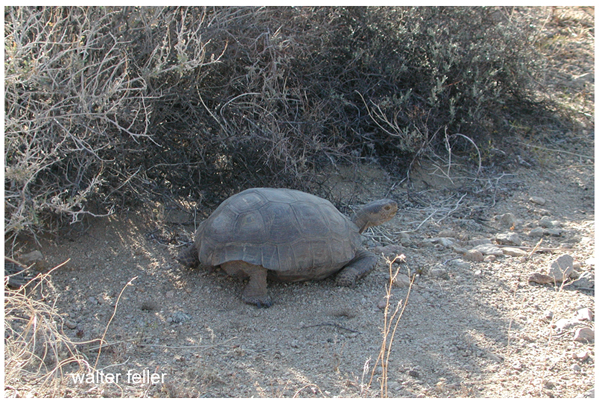
The desert tortoise occurs today in the Mojave and Sonoran deserts of southwest Utah, southern Nevada, southeastern California, and western Arizona.
Their habitat occurs below 5,000 feet in elevation. Their habitat can range from sandy creosote bush scrub to bajadas, as well as alluvial fans, washes and canyons.
Longevity
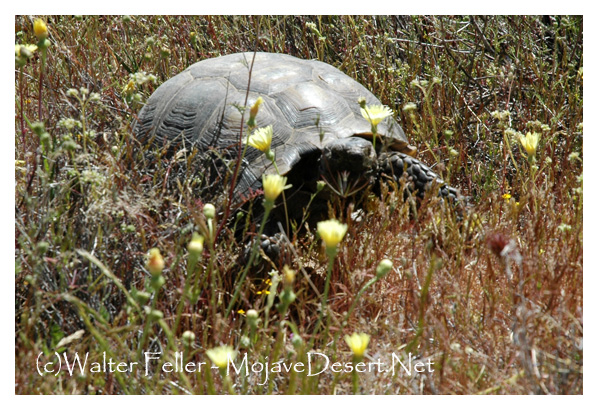
Tortoises are homebodies, spending up to 98% of their time in burrows, hibernating in the winter and estivating (remaining inactive) in the summer.
Even when they emerge they never travel far from home, usually ranging less than one square mile in their lifetime. Sexual maturity is reached in 15-20 years and their lifespan can often exceed 80 years.
Tortoise Burrows
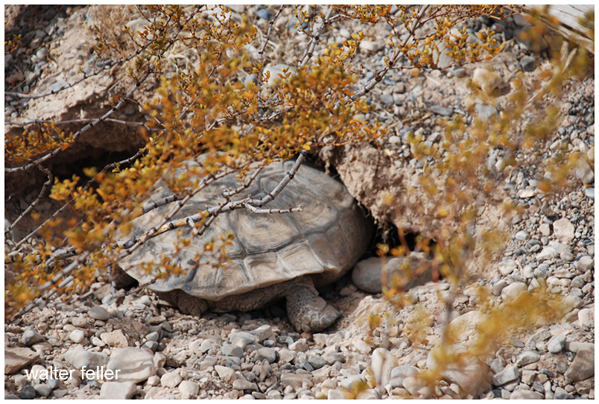
Burrows are cresent shaped tunnels. The tortoises dome-shaped shell works as a plug to keep temperature and moisture loss to a minimum.
A tortoise may excavate and use many burrows during the year. Most are located at the base of desert shrubs or in wash banks. Many species of mammals, birds, reptiles, and invertabrates have been known to share tortoise burrows.
The Clutch
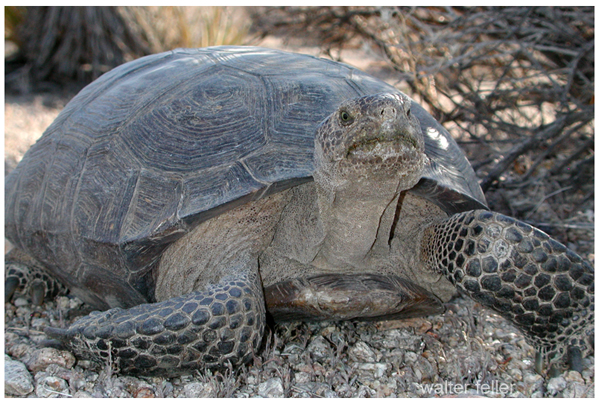
From March to late October, tortoises emerge from their burrows to bask in the sun, drink, feed and mate. After mating the female deposits her eggs in a hole she has dug with her hind legs. Clutches range from 1-15 eggs, which she arranges and covers with soil.
Hatchlings
Baby tortoises hatch from their eggs in 80-130 days and are about one inch in diameter. The embryos developed into males or females depending on the incubation temperature of the nest. At approximately 79-87F males are produced and about 87-91F females are produced.Juvenile Predation
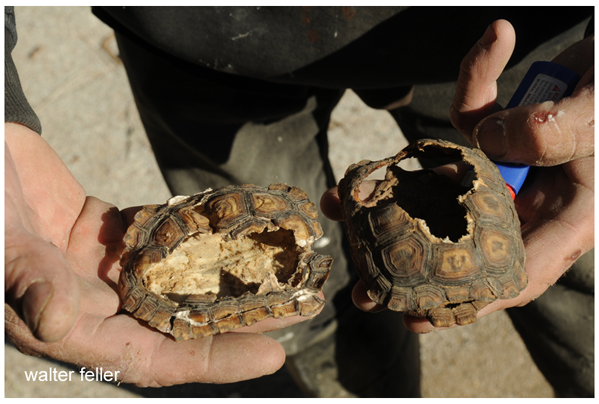
Hatchlings resemble adults and are immediately independent. The number one cause of newborn mortality is vulnerability to predators due to soft shells, which remain pliable for the first five years of life. Hatchlings are preyed upon by coyotes, ravens, kit foxes, badgers, roadrunners, and hawks.
The number of predators decreases as the shell hardens. Hatchlings from only a few eggs out of every hundred actually survive the 7-8 years it takes to reach adulthood.
Tortoises and Water
Tortoises are able to derive almost all of their water from consuming plants. In addition, they seek rainwater that collects in natural depressions or in ones tortoises dig themselves. Adult tortoises can survive a year or more without access to water.These precious opportunities must last for months. The tortoises large urinary bladder allows them to store water constituting over 40% of their body weight. Tortoises can then reabsorb the water within their body as needed.
Tortoise Diet
The Desert tortoise is an herbivore. Grasses form the bulk of its diet, but it also eats a wide variety of herbs, annual wildflowers, some shrubs, and new growth of cactuses, as well as their fruit and flowers.Since droughts are common in the deserts that the tortoise inhabit, they rely on the erratic years of good rainfall and the ensuing growth of palatable foods.
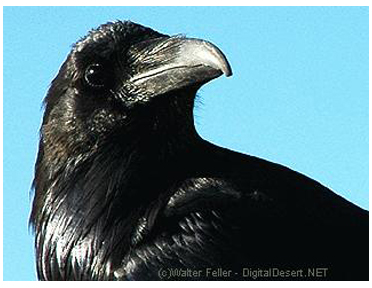
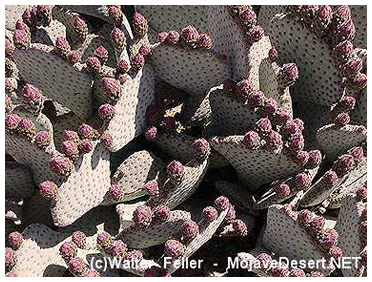
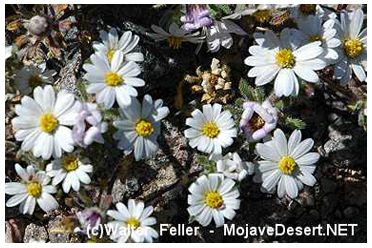
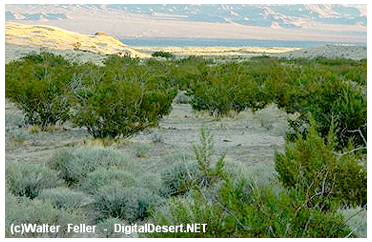
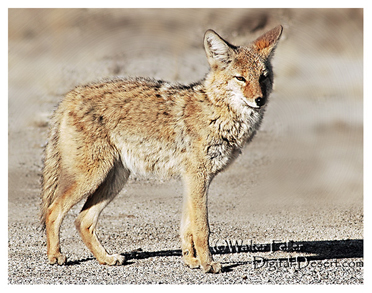
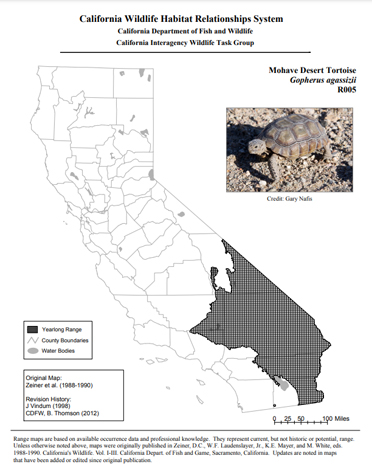
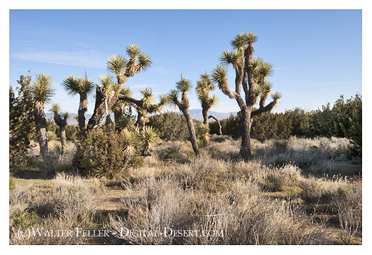
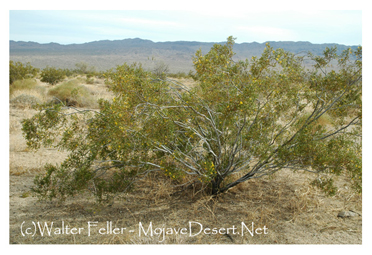

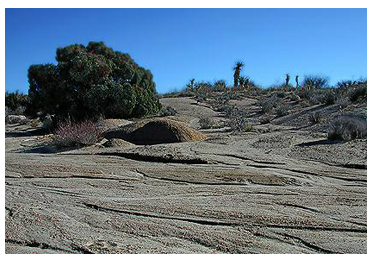
Desert wash habitat
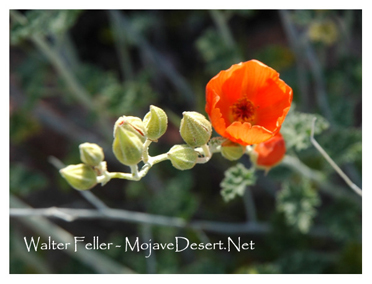
Globemallow - food source
Also see: